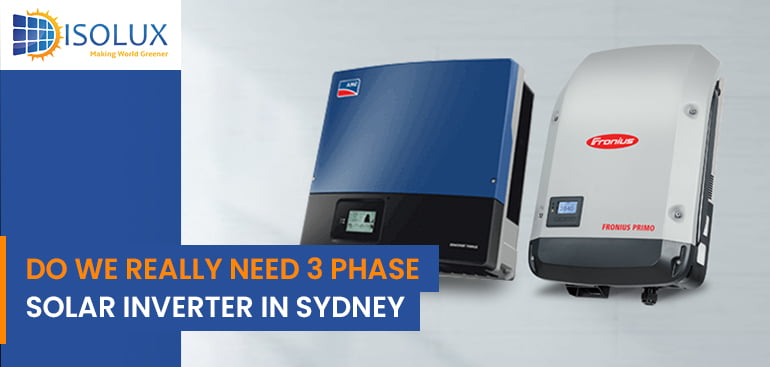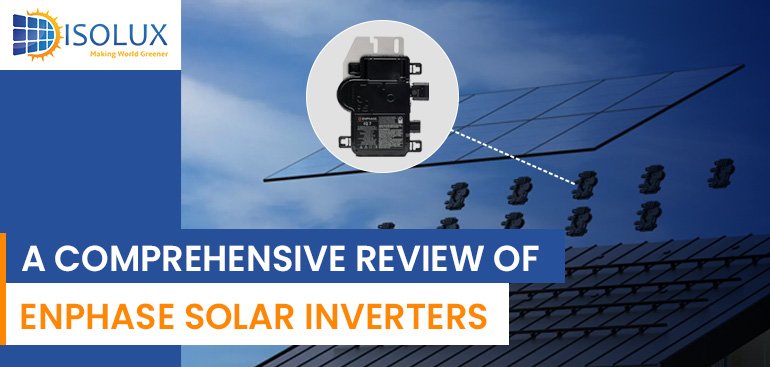As the world moves towards renewable energy sources, the use of solar energy has become increasingly popular. To effectively harness the power of the sun, it is necessary to have a device that converts the direct current (DC) produced by the solar panels into alternating current (AC), which can then be used to power homes and businesses. This device is known as a solar inverter. 3 Phase solar inverter designed for large-scale solar panel systems. Know about it in detail.
What is a Solar Inverter?
A solar inverter is a critical component of a solar power system. It is responsible for converting the direct current produced by the solar panels into alternating current, which is then sent to the electrical grid or used to directly power appliances and lighting.
Why Do We Need Solar Inverters?
Solar panels produce direct current, which is not compatible with the electrical grid or most appliances and lighting fixtures. In order to use the energy produced by the solar panels, it must be converted into alternating current through the use of a solar inverter.
How To Check if You Have a Three-Phase Supply?
Check your electrical panel: Look at the main electrical panel in your building or facility. If you have three sets of breaker switches, each controlling separate lines, then you have a three-phase electrical supply.
Check the voltage readings: You can use a multimeter to measure the voltage between each line in your electrical panel. If the readings are approximately equal and 120 degrees apart, then you have a three-phase electrical supply.
Consult an electrician: If you are unsure about the type of electrical supply you have, it is best to consult a licensed electrician. They can perform a more comprehensive evaluation and provide an accurate assessment of your electrical system.
It is important to note that a three-phase electrical supply is typically only available in commercial and industrial buildings, and is not commonly found in residential homes.
If you are considering incorporating solar energy into your operation, it is important to understand the role that solar inverters play and to choose the right type of inverter for your needs.
Types of Solar Inverters
There are two main types of solar inverters: single-phase and three-phase. Single-phase inverters are designed for use in residential applications, while three-phase inverters are designed for use in commercial and industrial applications.
What are 3-Phase Solar Inverters?
3-phase solar inverters are designed for use in commercial and industrial applications where there is a higher demand for electricity. These inverters are capable of handling larger loads and providing a more stable and consistent flow of electricity.
Advantages of 3-Phase Solar Inverters
One of the main advantages of 3-phase solar inverters is their ability to handle larger loads. This makes them ideal for commercial and industrial applications where there is a higher demand for electricity.
Another advantage of 3-phase solar inverters is their ability to provide a more stable and consistent flow of electricity. This is important for operations that require a reliable source of power, such as manufacturing facilities, data centers, and hospitals.
Why Do We Recommend Three-Phase Solar Inverters?
Three-phase solar inverters are typically recommended for commercial and industrial applications where there is a higher demand for electricity. There are several reasons for this recommendation:
Increased Power Output: Three-phase solar inverters are capable of handling larger loads and providing a higher power output compared to single-phase inverters. This makes them ideal for commercial and industrial applications where there is a higher demand for electricity.
Improved Stability and reliability: Three-phase solar inverters provide a more stable and consistent flow of electricity compared to single-phase inverters. This is particularly important for operations that require a reliable source of power, such as manufacturing facilities, data centers, and hospitals.
Cost-effective: While three-phase solar inverters are initially more expensive to install than single-phase inverters, they can be more cost-effective in the long run due to their increased power output and improved stability and reliability.
Conclusion
Solar inverters are a crucial component of any solar power system. Ultimately, the decision to install a 3 phase solar inverter in Sydney should be based on a comprehensive evaluation of your specific needs and circumstances.
Get a Free Quote to make your home energy-efficient and reduce your monthly electricity bills with Isolux Solar.
Read Next Blog:




